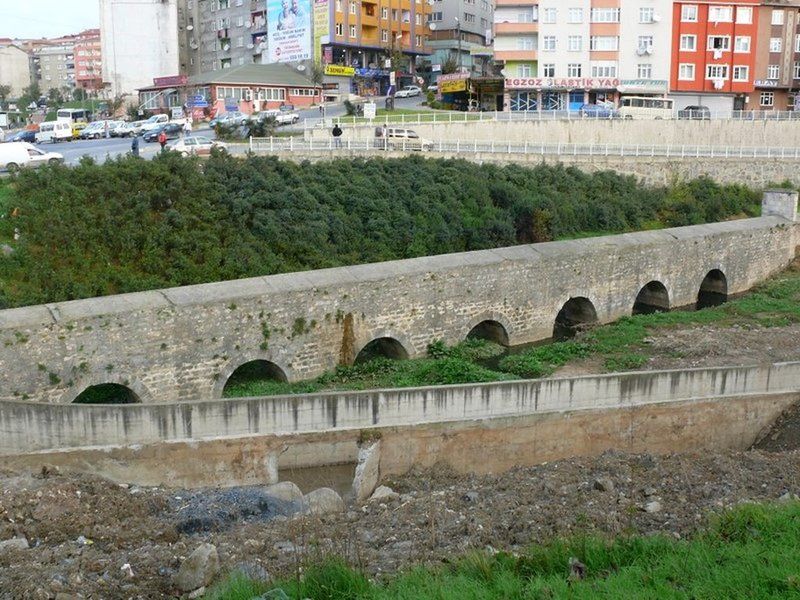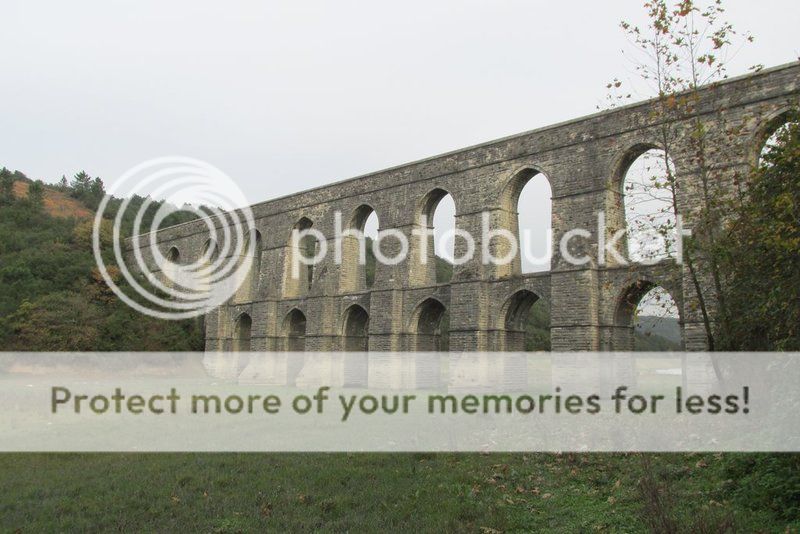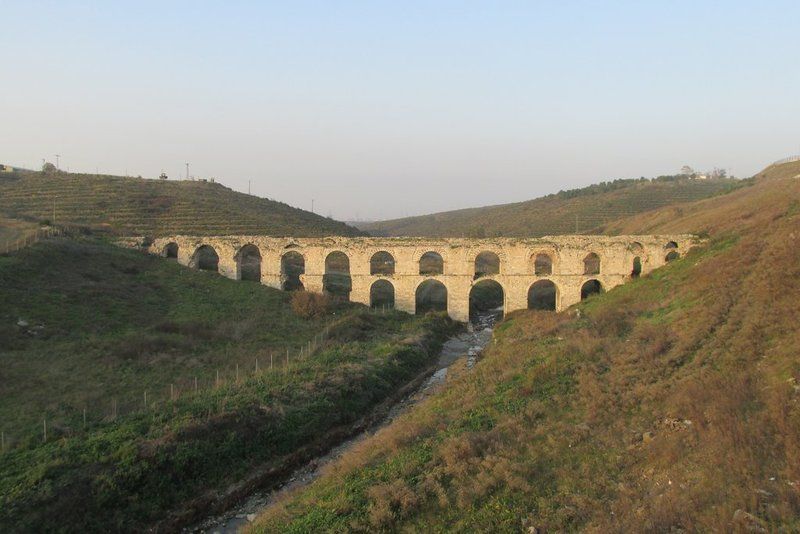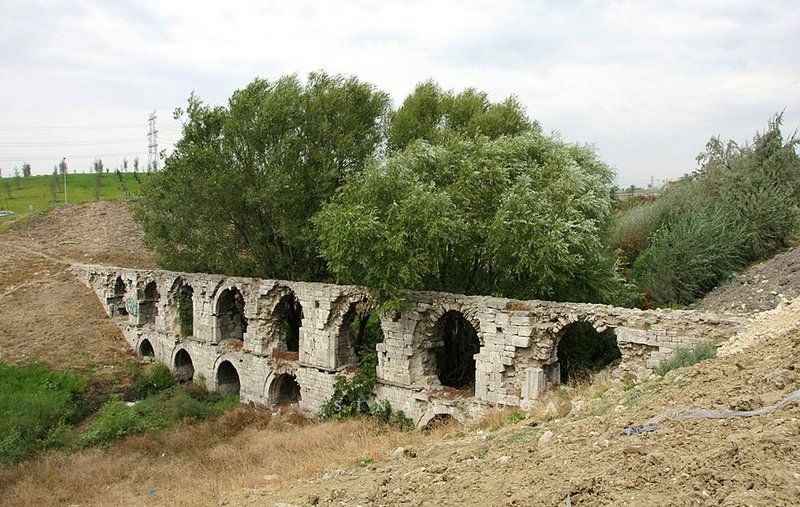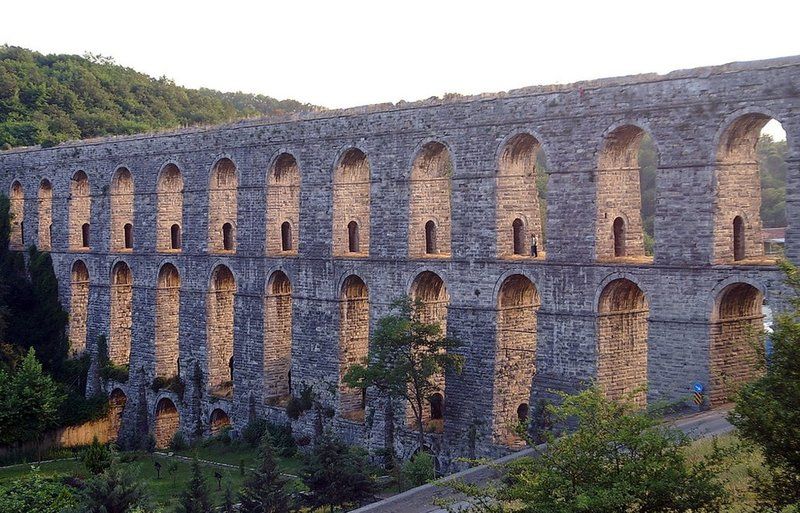Kemerburgaz, Eyüp - İstanbul - Turkey
GPS : 41°08'10.0"N 28°53'35.0"E / 41.136111, 28.893056
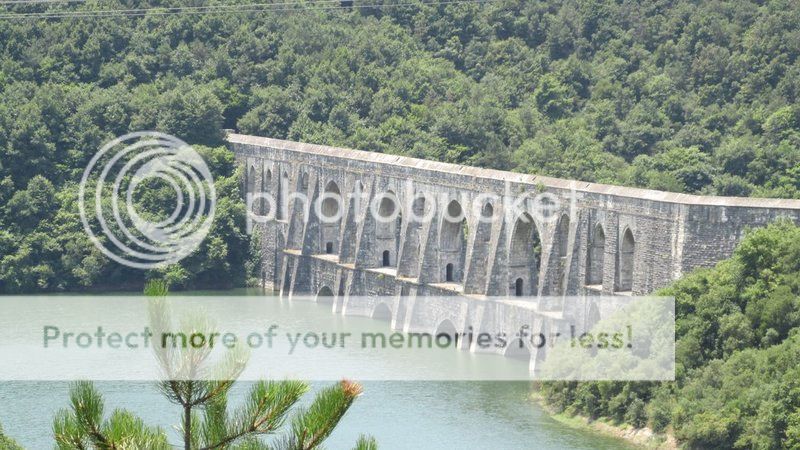 PHOTOGRAPHS ALBUM
PHOTOGRAPHS ALBUM
The Moğlova Aqueduct, which was built on Ali Bey Stream, 4 km northeast of Kemerburgaz between 1554 and 1563. It is one of the most important parts of the Kırkçeşme Water Facility. The aqueduct, destroyed in a major flood following its completion in 1563, was rebuilt by Sinan the Architect at a cost of 9.791.044 coins. This is one of the 4 built in de Alibey river valley.
The Moğlova Aqueduct built by Mimar Sinan in Istanbul between 1554-1562 is with thirty three arches and 260 m in lengthfrom its base is 47.11 meters high, decked with two-storeyed arches. It also functioned as a pedestrian bridge, thanks to a passage running through the piers of the arches. The wall thickness at the upper floors is 3.05 m and at the ground floor is 4.5 m. The openings of the four major bays at the bottom are 16.75 m, the upper arches are 13.45 meters.
Sinan managed to blend the bearing and functional elements into a work of art. The first aqueduct was destroyed by violent floods (1563) so Sinan obviously went to greater lenghts in his second attempt. The reconstruction of the Maglova aqueduct in 1564 was even more expensive, over 50 million akçe. The Moğlova Aqueduct, a thing of exceptional strength and beauty that is sadly no longer accessible to casual visitors.
This structure is a masterpiece of Architect Sinan, which is also known as the unique and the most significant water heritage worldwide. Moğlova Aqueduct is mentioned to be the most beautiful piece of Kırkçeşme Water Supply System that provided water from Belgrad and Kemerburgaz to the city center's distrubition point, Eğrikapı.
This two-storeyed structure was not only used to carry water but also functioned as a pedestrian bridge, with a passage running over the lower arches. It forms part of the Kırkçeşme water system, which brought water to a distribution center known as Savaklar or Eğrikapı Maksemi just outside the old city walls. From here it was able to supply 158 different locations that included seven palaces, 94 public drinking fountains, 15 watering troughs, 19 wells, and 13 public baths.
Today's masterpiece is a result of a secondary construction of Architect Sinan, which was in progress after the total ruin of the first Moğlova Aqueduct by the 1563's inundation.The structure is also known as the Justinian Aqueduct, because Moğlova carries the remnants of Byzantine Age. The structure's uniquness as the following: Moğlova aqueduct eschews the vertical, two dimensional wall-like structure of tradition for a three dimensional system which is more stable against horizontal stress.
Its elegance and engineering datas are incomparable properties of the aqueduct. This sculpture like structure has unique piers' meeting the fender piles. Furthermore, the aqueduct is the highest one among Kırkçeşme Water Supply Sysem with 47.11 m of height. Alibeyköy Dum Lake's water has presently covered almost quarter of the structur.
However the drought of 2007 that took place in Turkey, occured as a result of very few rain, has caused the structure to be comprehended completely. Moğlova, still continues to carry water and has become a place of interest for fishers and childeren of the environment, especially during the weekends.
After the water transported from the eastern and western branches of the Kâğıthane Stream joins in Başhavuz (the Main pool), the main transfer gallery runs to the south. The water in the gallery here passes through the valley of Alibeyköy Stream over the Moğlova aqueduct. The prominent western authors, who attributed every significant building to the Byzantines also referred to these aqueducts as Justinyen aqueduct.
However, based on the research, the structure of the aqueduct and the information in his memories (Tezkirtü’l-Bünyan) that Sinan got written by his friend Nakkaş Sai Mustafa Çelebi (the calligrapher) few years before his death, it was proved that this aqueduct was definitely a work of Sinan.
Moğlova Aqueduct is 258 meters long and 35.30 meters high and is double-storied. Moğlova Aqueduct is a masterpiece in terms of both engineering and architecture and is unique in the world. Prof. Dr. Kazım Çeçen, who produced hundreds of valuable works and conducted many studies on this subject, acknowledged that “Even if Sinan had designed and built the Mağlova Aqueduct, he would still have won the same fame and known as a great engineer and architect”.
One of the downsides of Moğlova aqueduct is the fact that its location is out of the way; the other one is that the stirrup of its lower arch is 1 meter below the water level due to the Alibey Dam. The repair and maintenance carried out during the construction of the dam by the water administration of İstanbul was very successful, the rising water of the lake of dam has not had a negative effect and the Aqueduct is still intact despite being under the water.
LOCATION SATELLITE MAP
These scripts and photographs are registered under © Copyright 2016, respected writers and photographers from the internet. All Rights Reserved.
